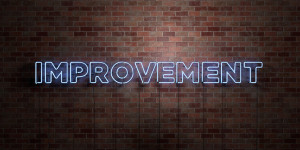
Trips to the DMV (Department of Motor Vehicles) are not typically something that many people look forward to no matter how awesome your local branch office may be. After all, a day at the beach or binge watching a whole season of your favorite show probably tops the list of things you’d rather be doing above any visit to an office building. While investments, by both the public sector and the private sector with companies like eTags, are making DMV related experiences better, there is still much that can be done to improve processes.
DMVs and other state agencies do their best to allocate budget where it is most needed so they can serve their residents for all of their needs. Sometimes, that may mean that technology falls by the wayside to assure that everything that needs to be taken care of is even if not through the extended use of technology. Taking into account some of the most common complaints when it comes to needing to complete a DMV related item, here are some of the top areas where technology can really make a difference.
Wait Times
Lines at the DMV are sometimes unavoidable. While DMV employees are working to get people in and out, just an hour or two can mess up your day as it cuts into your job, errands, or something else. There many states that are taking notable steps to reducing wait times at DMV offices including updating the availability and abilities of their online portals and even adding kiosks on the street for simple transactions. Whether online or at a kiosk, vehicle owners and drivers can skip lines and get things done faster like registration renewal, changes of address, and more.
Business Hours
The DMV generally operates under normal business hours, usually opening around 8 a.m. and closing around 5 P.M., and this can make it hard for some to find the time to make it there if they work during similar hours. With countless numbers of drivers looking to get a myriad of things done at the DMV during those hours and the fact that those hours conflict with the work schedule of many vehicle owners, it is easy to see why many people can’t get the service they need. Here, agencies might find that adding remote help services like online chat and phone support with extended business hours will allow people to get the information they need. Often, a trip to the DMV can be avoided if people know what paperwork they need to come in with when they are ready to complete a transaction such as a title transfer. Extended hours for chat and phone support reduced wait times at DMV offices and increase satisfaction. eTags staffs their centers with Customer Representatives to allow their customers to reach them easily by phone or email and often with extended business hours. As a private company, it is likely easier for them to make that investment whereas DMVs are often constrained by tight budgets but, an investment in the technology of remote workers can go a long way.
Complications and Unforeseen Requirements
When it comes to vehicle or driver related updates and changes, nothing is ever as simple as you might think. Whether you are applying for or renewing your license or registering your vehicle, you might often find you are missing a thing or two. The DMV usually has a good reason for why certain processes or requirements are in place but may not communicate those things effectively which can then result in extra trips to the DMV and missed deadlines. Easily parsed online resources can make a big difference. Most DMVs do have website with information on how to complete a certain task and what is needed but may not be organizing the information effectively or may be missing some key information. Take for example completing a title transfer in Maryland; any person is going to need the title, the completed application form, and fee payment but did you know that if the car is leased or has a lien you need an extra form? Maryland does a great job of making that information available online but many states that may have similar requirements do not. With technology, you can create an easy to use workflow such as having site visitors select what they want to do then creating paths that lead them to the information they need based on questions that can decipher each individual case as closely as possible. All it takes is a group of people to map out that experience and the output.